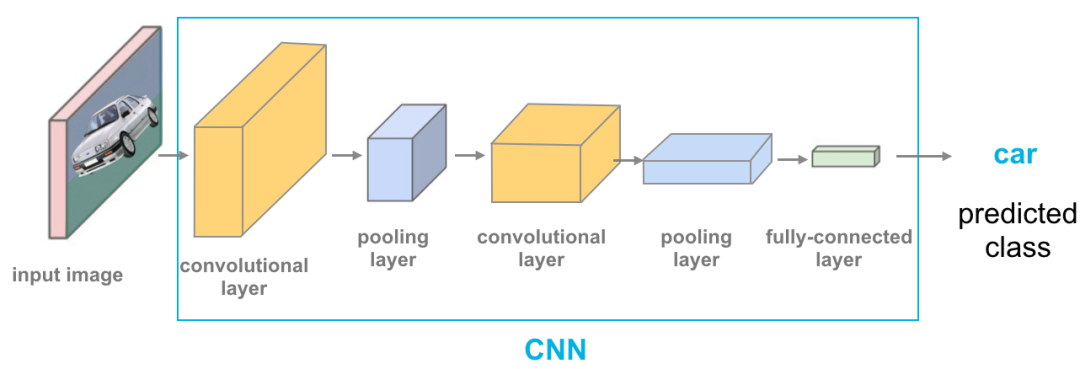【数据增强术】:CNN泛化能力提升的有效手段揭秘
发布时间: 2024-09-03 06:54:32 阅读量: 120 订阅数: 48 


java+sql server项目之科帮网计算机配件报价系统源代码.zip

# 1. 数据增强技术概述
在现代机器学习和深度学习领域,数据增强技术是一种关键的预处理步骤,它能够通过各种变换来人为地扩大数据集,从而提高模型的泛化能力。数据增强不仅适用于图像数据,还广泛应用于视频、音频和自然语言处理等其他类型的数据。通过数据增强,可以有效缓解过拟合现象,提升模型在未见示例上的表现。
## 数据增强的目的与意义
数据增强技术的初衷是为了在有限的数据条件下,提升模型的训练效果。通过模拟真实世界的数据变异,使得模型能够更好地应对数据分布的变化,从而在实际应用中表现出更高的鲁棒性。数据增强通过引入不同的变换,例如旋转、翻转、缩放等,人为增加了数据的多样性。
## 数据增强的典型方法
- **几何变换**:如旋转、平移、缩放,这些操作可以增加图片的空间变化。
- **颜色空间变换**:改变图像的颜色强度和对比度,模拟光照变化。
- **像素操作**:包括添加噪声、滤波等,以增强模型对图像噪声的容忍度。
数据增强技术的发展,也使得深度学习模型在各种实际应用中变得更加有效和高效。在接下来的章节中,我们将深入探讨数据增强的理论基础、具体应用,以及它在卷积神经网络(CNN)训练中的关键作用。
# 2. 数据增强的理论基础
### 2.1 数据增强在CNN中的作用
CNN(卷积神经网络)已成为许多视觉任务的核心模型,但它在面对小规模数据集时往往容易过拟合。过拟合是模型在训练集上表现优秀但在验证集或测试集上表现差的现象,这主要是因为模型对训练数据的特定噪声过于敏感。数据增强技术在这里扮演着至关重要的角色。
#### 2.1.1 泛化能力与过拟合问题
为了提升CNN的泛化能力,需要一种方法使得模型不仅能学习到训练数据的特征,还能在新样本上表现出良好的性能。数据增强通过引入变化,扩展了训练数据集,强迫模型学习更为普遍和鲁棒的特征,从而缓解了过拟合现象。
#### 2.1.2 数据增强对抗过拟合的机理
数据增强通过给数据集引入变化来模拟现实世界数据的多样性,这包括对图像的平移、旋转、缩放和颜色变化等操作。当这些变化被引入到训练集中时,模型被迫学习到更抽象和一般化的特征表示,而不是简单地记忆训练集中的特定模式。例如,当一个图像识别模型在训练过程中不断见到不同角度、不同尺寸的猫图像时,它便更可能学会识别猫的本质特征而非某些偶然特征。
### 2.2 数据增强的分类
数据增强的方法可以按照不同的维度进行分类,这里我们根据数据增强的具体操作进行分类。
#### 2.2.1 基于几何变换的方法
基于几何变换的数据增强包括平移、旋转、缩放、翻转等操作。这类方法可以模拟拍摄角度的变化,增加模型对空间位置变化的鲁棒性。
```python
from scipy.ndimage import rotate, zoom
import numpy as np
# 旋转图像示例
def rotate_image(image, angle):
rotated_image = rotate(image, angle, reshape=False)
return rotated_image
# 缩放图像示例
def zoom_image(image, zoom_factor):
zoomed_image = zoom(image, zoom_factor, order=1)
return zoomed_image
# 假设image是一个NumPy数组表示的图像
rotated_image = rotate_image(image, 30) # 旋转30度
zoomed_image = zoom_image(image, 0.8) # 缩小到原来的80%
```
在上述代码中,我们使用了`scipy.ndimage`模块提供的`rotate`和`zoom`函数,分别对图像进行旋转和缩放操作。
#### 2.2.2 基于颜色空间的方法
基于颜色空间的数据增强包括颜色抖动、亮度调整、对比度调整等,这类方法模拟了不同光照条件下的变化。
```python
from skimage.exposure import adjust_log, adjust_gamma
import numpy as np
# 对比度调整示例
def adjust_contrast(image, factor):
contrast_image = image * factor
return contrast_image
# 亮度调整示例
def adjust_brightness(image, value):
brightness_image = image + value
return brightness_image
# 假设image是一个NumPy数组表示的图像
contrast_image = adjust_contrast(image, 1.2) # 增加对比度
brightness_image = adjust_brightness(image, 0.1) # 增加亮度
```
代码块中的`adjust_contrast`函数通过乘以一个因子来增强或减弱图像的对比度,而`adjust_brightness`函数通过增加一个值来调整图像的亮度。
#### 2.2.3 基于像素操作的方法
像素操作类数据增强包括添加噪声、模糊、锐化等,这些操作可以模拟图像的损坏和摄像机传感器的噪声。
```python
from skimage.util import random_noise
from skimage.filters import gaussian
import numpy as np
# 添加高斯噪声示例
def add_gaussian_noise(image, mean=0, var=0.01):
noisy_image = image + np.random.normal(mean, var, image.shape)
return noisy_image
# 图像模糊示例
def gaussian_blur(image, sigma=1):
blurred_image = gaussian(image, sigma)
return blurred_image
# 假设image是一个NumPy数组表示的图像
noisy_image = add_gaussian_noise(image) # 添加高斯噪声
blurred_image = gaussian_blur(image, sigma=2) # 模糊处理
```
代码块中的`add_gaussian_noise`函数通过向图像添加来自高斯分布的噪声来模拟图像损坏,而`gaussian_blur`函数则利用高斯函数对图像进行模糊处理,模拟相机传感器或传输过程中的噪声影响。
### 2.3 数据增强策略的优化
数据增强策略的优化是提高模型性能的关键因素。以下为数据增强策略优化相关的两个方面:
#### 2.3.1 动态数据增强的重要性
动态数据增强是指在训练过程中根据模型的表现和梯度信息动态地调整增强策略,以此来实现更加针对性的数据增强。这种方法能够更好地模拟实际应用中可能遇到的数据分布,提高模型的泛化能力。
#### 2.3.2 自适应数据增强策略的实现
自适应数据增强策略,也称作条件数据增强,它根据当前模型的性能评估结果,自适应地选择或生成适合当前学习阶段的数据增强策略。这需要一个反馈机制,使得模型能够评估数据增强的有效性,并据此调整策略。
在这一部分,我们探讨了数据增强在CNN中的关键作用,介绍了多种数据增强方法,从几何变换到颜色空间调整,再到像素级别的操作,为后续章节中数据增强技术实践奠定了理论基础。通过上述章节的学习,我们将能够更深刻地理解数据增强技术,并将其有效地应用到实际的项目开发中。
# 3. 数据增强技术实践
数据增强技术实践是将理论转化为实际应用的关键一步。在本章中,我们将深入探讨数据增强如何在图像处理、视频处理和自然语言处理(NLP)中得以应用,以及它们各自的操作方式和策略。
## 3.1 数据增强在图像处理中的应用
图像数据增强是深度学习中最为常见的应用场景之一,尤其是在卷积神经网络(CNN)用于图像分类、目标检测等任务时。图像增强通过改变图像的某些属性(如旋转、缩放、颜色调整等)来增加训练数据的多样性,从而提高模型对新图像的泛化能力。
### 3.1.1 图像旋转和缩放
图像旋转和缩放是最基本的数据增强技术之一,它们通过改变图像的空间维度来生成新的数据样本。
**操作步骤:**
1. **图像旋转**:通过选择一个旋转角度(如±15°、±30°等),对图像进行顺时针或逆时针旋转,生成新的图像样本。这模拟了在不同角度观察同一对象的情况。
```python
from scipy.ndimage import rotate
import numpy as np
# 假设 original_image 是我们要旋转的原始图像
angle = 30 # 旋转角度
rotated_image = rotate(original_image, angle, reshape=False, order=1)
```
在这段代码中,我们使用 `rotate` 函数从 `scipy.ndimage` 模块进行图像旋转。参数 `reshape=False` 表示旋转后的图像尺寸保持不变,`order=1` 确保了插值的质量。
2.
0
0





